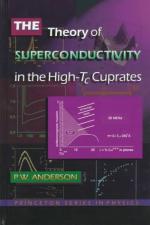|
This section contains 903 words (approx. 4 pages at 300 words per page) |

|
In the age of technology, with smaller and smaller electronic components being used in a growing number of applications, one pertinent application of mathematics and physics is the study of superconductivity. All elements and compounds possess intrinsic physical properties including a melting and boiling point, malleability, and conductivity. Conductivity is the measure of a substance's ability to allow an electrical current to pass from one end of a sample to the other. The measurement of resistivity (the inverse of conductivity) is called resistance and is measured in the unit ohms (Ω).
Ohm's Law
An important and useful formula in science is called Ohm's Law, E = IR. E is voltage in volts, I is current in amperes, and R is resistance in ohms. To visualize this, imagine a wire conducting electrons along its length, like a river flowing on the surface of the wire. The resistance acts like rocks in...
|
This section contains 903 words (approx. 4 pages at 300 words per page) |

|


